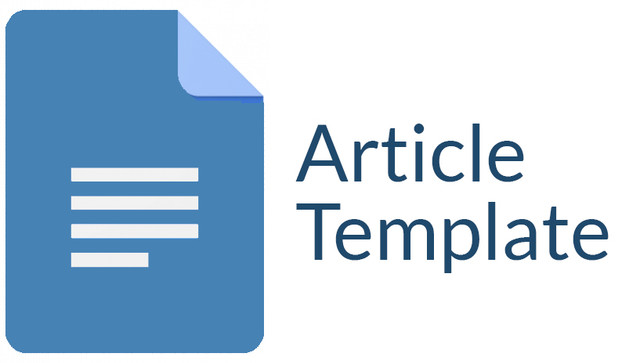Development of Video Tutorial Practicum of Human Blood Circulation to Support Biological Learning in The Covid-19 Pandemic Time
DOI:
https://doi.org/10.30736/seaj.v3i1.353Keywords:
ADDIE Model, E-Learning Learning, Technology Development, Video TutorialAbstract
Developing Practicum Tutorial Video For High School Students On The Human Blood Circulation In The Eleventh Graders Of Science Class To Support Biology Learning In The Covid-19 Pandemic Time. The government requires educators to use technology-based e-learning such as a practicum tutorial video for students. The purpose of this study was to develop a tutorial video for a practicum on human blood circulation material for high school students in the eleventh grade of IPA class in order to support Biology learning during the Covid-19 pandemic. This was a research and development using the ADDIE model having five stages, namely: (1) analysis, (2) design, (3) development, (4) implementation, and (5) evaluation. The instrument of the study used a questionnaire and test. The questionnaire was used as the measurement of learning media in the form of a tutorial video, and the test was used as a cognitive (knowledge) measurement. Based on the results, the video tutorial practicum had a good score of 3 tested by media and material experts, a score of 3.66 in the very good category assessed by the teachers, an average score of 2.96 with the results in the good category assessed by the students. Thus, the developed practicum tutorial video is feasible as the learning medium on human blood circulation material for practicum activity during the Covid-19 pandemicDownloads
References
Aji, R. H. (2020). Dampak Covid-19 pada pendidikan di Indonesia: sekolah, keterampilan, dan proses pembelajaran. SALAM. Jurnal Sosial dan Budaya Syar-I, 1-7.
Ali, M. (2012). Metode Penelitian dalam Olahraga. Surabaya: UNESA University Press.
Aryani, Alifia, I., & Gundo. (2014). Analisis Lembar Kerja Siswa MGMP Matematika Kabupaten Pati Kelas XI SMP Semester Gasal Tahun Ajaran 2013/2014 Berdasarkan Taksonomi Bloom Dua Dimensi. Semarang: Skripsi UIN Walisongo.
Azhar, A. (2014). Media Pembelajaran. Jakarta: PT. Rajagrafindo Persada.
Carin, A. A. (1997). Teaching Modern Science (7’th ed) Columbus. Colombus: Merrillcan Imprint of Prentice Hall.
Dewi, P. K., & Budiana, N. (2018). Media pembelajaran bahasa: aplikasi teori belajar dan strategi pengoptimalan pembelajaran. Malang: UB Press.
Elvarita, A., Iriani, T., & Handoyo, S. S. (2020). Pengembangan Bahan Ajar Mekanik Tanah Berbasis E-Model pada Program Studi Pendidikan Teknik Bangunan Universitas Negeri Jakarta. Jurnal Pendidikan Teknik Sipil, 1-7.
Endang, M. (2013). Metode Penelitian terapan Bidang pendidikan. Bandung: Alfabeta.
Gina, E. P. (2014). Pengembangan Media Video Mata Pelajaran Keterampilan Menyulam Untuk Siswa Tunagrahita Ringan Kelas Xii Di Sma Luar Biasa Negeri 1 Yogyakarta. Yogyakarta: Yogyakarta UNY.
Harlen, W. (2002). Science. Guides to Assessment In Education (1’st.Ed.). London: Machmillan Education.
Istiqomah, A., & Redjeki, T. (2016). Penerapan Model Pembelajaran Project Based Learning (PjBL) Pada Materi Pokok Larutan Asam dan Basa di Kelas XI IPA 1 SMA Negeri 2 Karanganyar tahun Ajaran 2013/2014. Jurnal Pendidikan Kimia, 7-16.
Kemendikbud. (2020). Edaran Tantang Pencegahan Wabah COVID-19 di Lingkungan Satuan Pendidikan Seluruh Indonesia. Jakarta: Kementrian Pendidikan & Kebudayaan.
Kosasih, E. (2015). Strategi Belajar dan Pembelajaran Implementasi Kurikulum 2013. Bandung: Yama Widya.
Mahfud, M. A. (2020). Pengembangan dan Uji Kelayakan Game Edukasi Digitalsebagai Media Pembelajaran Biologi Siswa SMA Kelas X Pada Materi Animalia. Bioedukasi, 12-17.
Molinda, M. (2005). Instrucsional Technology and Media for learning. New Jersey Colombus: Ohio.
Mulyati, A. (2003). Strategi Belajar Mengajar Kimia. Technical Cooperation Project for Development of Sciense and Mathematics teaching for Primary and Secondary Education In Indonesia (IMSTEP), 1-8.
Risnani, L.Y, A. (2018). Game Edukasi Digital Untuk Meningkatkan Minat Belajar Peserta Didik Pada Mata Plajaran IPA. The 8th University Research Colloquium 2018 Universitas Muhammadiyah Purwokerto, 376-348.
Riyana, C. (2007). Pedoman Pengembangan Media Video. Bandung:Program P3AI. Bandung: Universitas Pendidikan Indonesia.
Rustaman, A. (2005). Pengembangan Kompetensi (Pengetahuan, keterampilan, Sikap, dan Nilai) Melalui Kegiatan Praktikum Biologi. Bandung: Penelitian Jurusan Pendidikan Biologi FP MIPA UPI.
Sadiman, A. S. (2012). Media Pendidikan. Jakarta: PT. Rajagrafindo Persada.
Smaldino, Lowther, & Russell. (2011). Instructional Technology and media Learning. Jakarta: Kenacan Prenada Media Group.
Sugiyono. (2012). Metode Penelitian Kualitatif Kuantitatif dan R&D. Bandung: Alfabeta.
Tomo. (2003). Mengintegrasikan Teknik membaca dalam SQMR dan Membuat Catatan berbentuk Graphic Portoorganizer dalam Pembelajaran Fisika Disertasi PPS UPI. Disertasi PPS UPI (hal. 24). Bandung: tidak dipublikasikan.
Downloads
Additional Files
Published
How to Cite
Issue
Section
License
Authors who publish with this journal agree to the following terms:
- Authors retain copyright and grant the journal right of first publication with the work simultaneously licensed under a Creative Commons Attribution-ShareAlike 4.0 International License that allows others to share the work with an acknowledgment of the work's authorship and initial publication in this journal.
- Authors are able to enter into separate, additional contractual arrangements for the non-exclusive distribution of the journal's published version of the work (e.g., post it to an institutional repository or publish it in a book), with an acknowledgment of its initial publication in this journal.
- Authors are permitted and encouraged to post their work online (e.g., in institutional repositories or on their website) prior to and during the submission process, as it can lead to productive exchanges, as well as earlier and greater citation of published work (See The Effect of Open Access).

This work is licensed under a Creative Commons Attribution-ShareAlike 4.0 International License.










